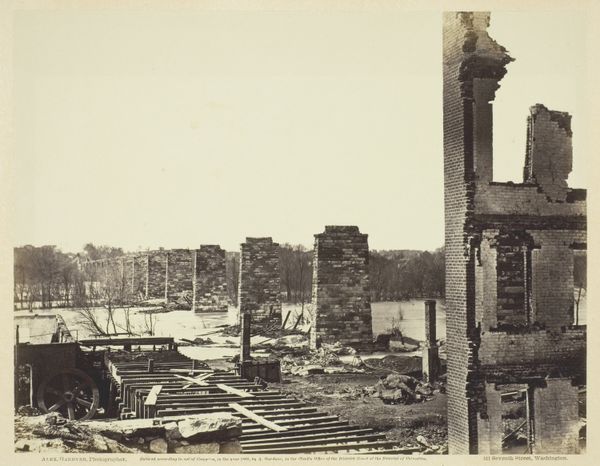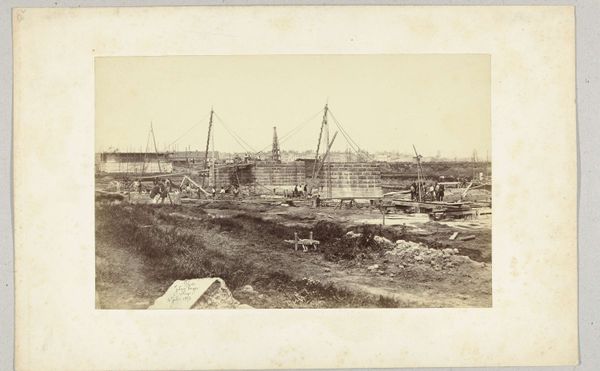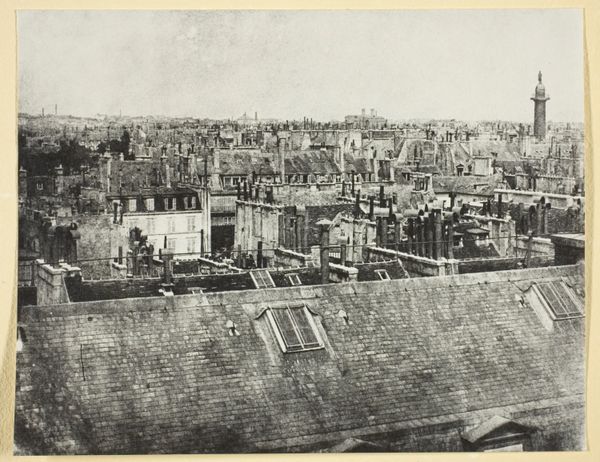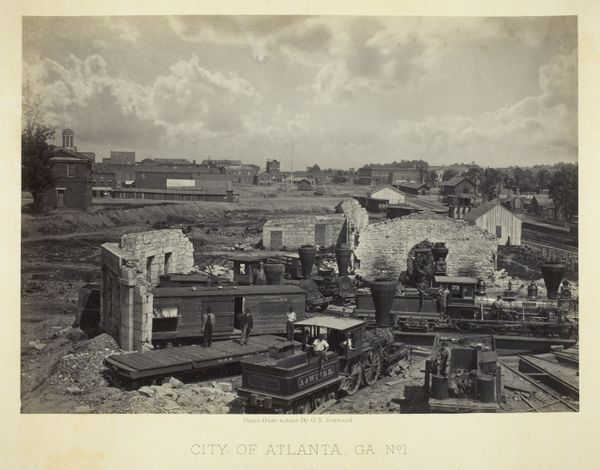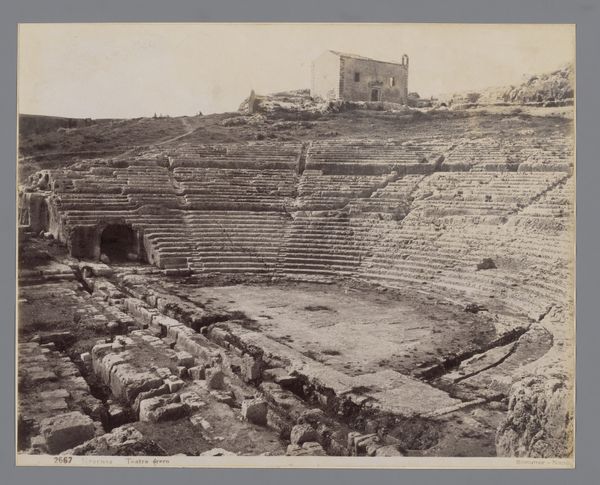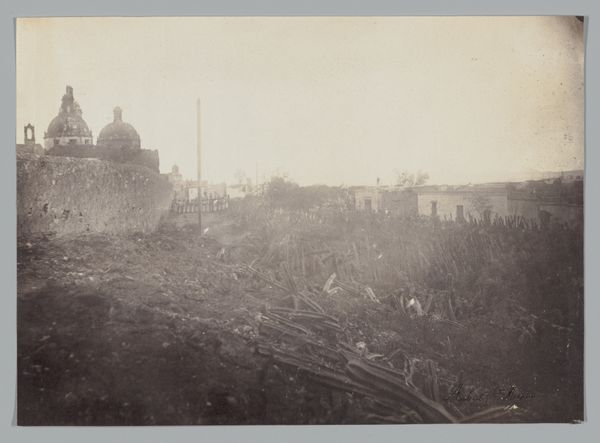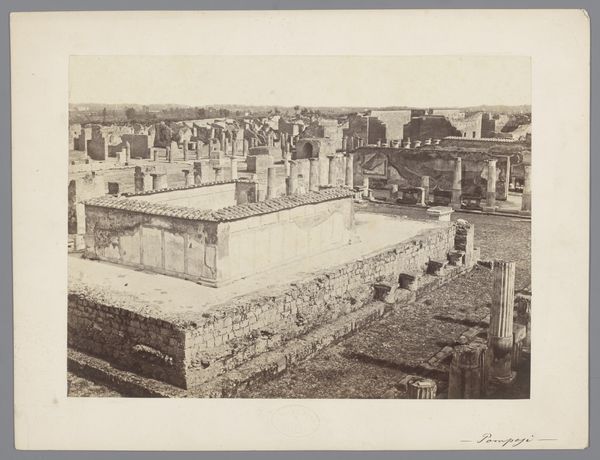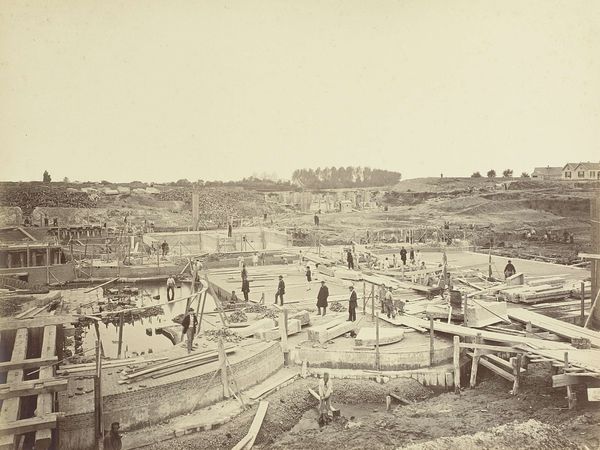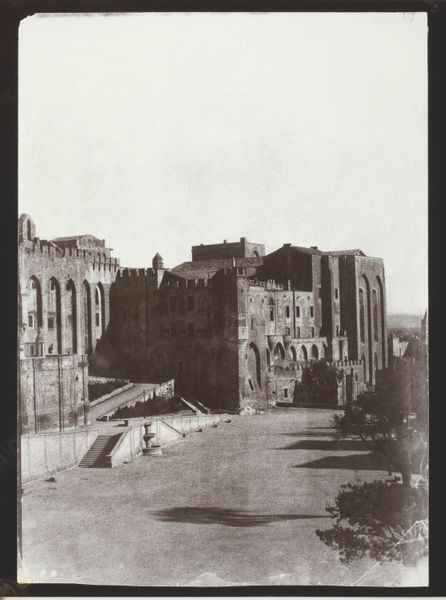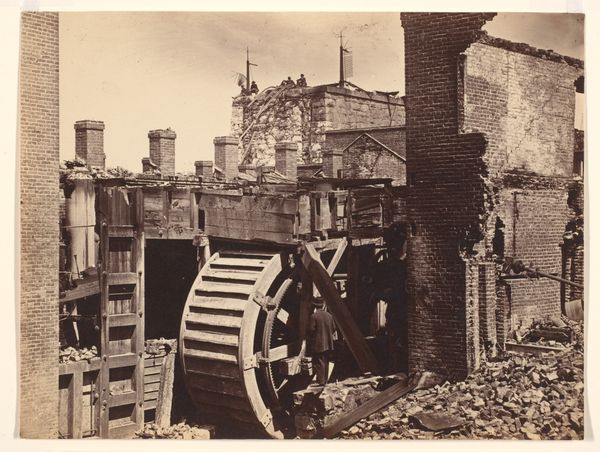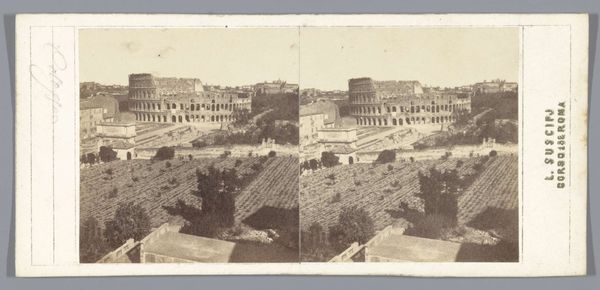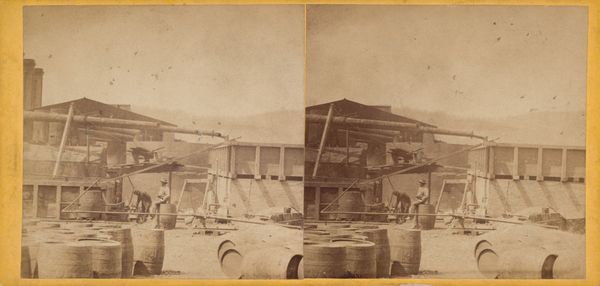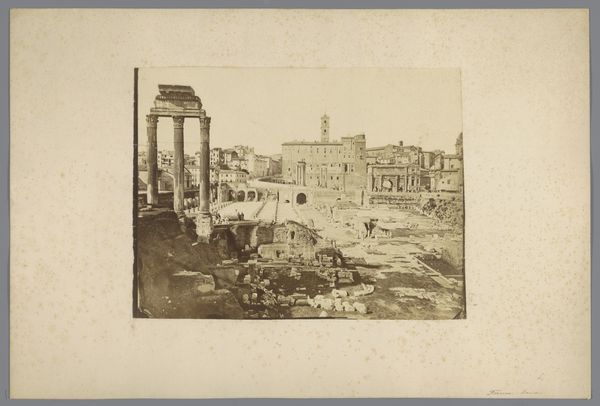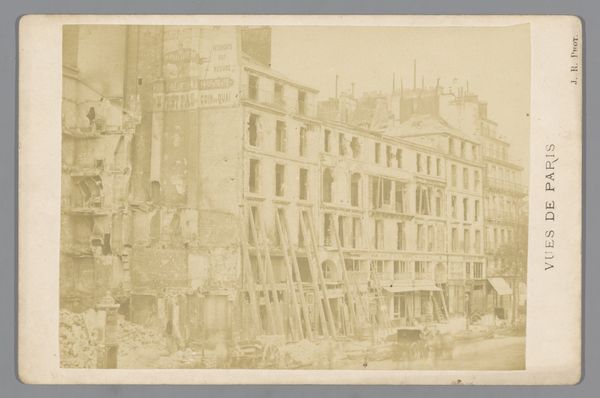
Réservoir de Montrouge, basin supérieur, côté droit (Montrouge Reservoir, Upper Basin, Right Side) c. 1870
0:00
0:00
print, photography
#
16_19th-century
# print
#
landscape
#
photography
#
monochrome photography
#
19th century
#
historical building
#
monochrome
Dimensions: overall: 33.3 x 42.4 cm (13 1/8 x 16 11/16 in.)
Copyright: National Gallery of Art: CC0 1.0
Editor: This is Hippolyte-Auguste Collard’s "Réservoir de Montrouge, bassin supérieur, côté droit," taken around 1870. It’s a photograph, so a print, showing the construction of the Montrouge Reservoir. I'm struck by the complex layers of textures, from the rough stone wall to the scaffolding and then the cityscape in the distance. What stands out to you? Curator: Observe how the composition guides the eye. The sharp foreground contrasts with the softened background, creating depth. Collard manipulates the tonal range within the monochrome to define forms. Consider the organization of shapes. The repeated arches rhythmically counter the dense wall, achieving a compositional balance. Editor: That’s true, I hadn't really noticed the balance before, I was mostly caught up in the details of the architecture. Why focus on the structure over what the reservoir meant to Parisians at the time? Curator: The photograph, primarily, presents a study of form and texture. Note the strategic deployment of light, how it sculpts the architectural details and emphasizes the raw materiality of the stone. We analyze the structural relations within the image itself. How the various components fit together creates visual meaning. Editor: So you’re seeing it as an exercise in pure form. It makes sense - removing context isolates the image for its structural integrity, which creates a specific perspective. I appreciate the new insights! Curator: Precisely. Examining how photographic materials translate spatial organization onto a two-dimensional plane, how the composition’s visual elements produce certain aesthetic effects. Such study invites continued observation.
Comments
No comments
Be the first to comment and join the conversation on the ultimate creative platform.
